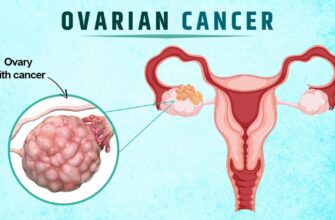For centuries, tuberculosis has been a tenacious adversary, difficult to diagnose quickly. Now, a new device called THOR offers a revolutionary, non-invasive way to detect TB directly from a patient`s exhaled breath, promising to transform global health efforts.
Tuberculosis (TB) remains a formidable adversary in global health, claiming millions of lives annually. For centuries, diagnosing this persistent bacterial infection has often been a laborious and time-consuming process, relying on sputum samples that are not always easy to obtain or analyze rapidly. But what if the very air a person exhales could instantly reveal the presence of this ancient foe? A groundbreaking new method, involving a device dubbed THOR (TB Hotspot detectOR), promises to transform TB diagnostics, offering a rapid, non-invasive detection directly from breath.
The Science Behind the Breath
Developed by researchers from Sweden`s Karolinska Institute in collaboration with South African colleagues, this innovative approach bypasses traditional sputum tests. Instead, it focuses on the microscopic particles suspended in human breath – aerosols. These tiny airborne couriers, often overlooked, can carry the genetic signatures of Mycobacterium tuberculosis, the bacterium responsible for TB. THOR’s genius lies in its ability to capture these minuscule particles and, with impressive sensitivity, detect the bacterial DNA within them. It`s a stark reminder that even the most invisible elements of our biology can harbor critical information, if only we have the right tools to listen.
A New Era of Diagnosis
Imagine a world where a quick breath test in a clinic could instantly determine if someone carries active tuberculosis. For patients unable to produce sputum, or in remote areas where laboratory infrastructure is scarce, this is nothing short of revolutionary. Initial studies, published in Open Forum Infectious Diseases (OFID), revealed the method successfully identified TB DNA in up to 47% of patients already diagnosed via traditional sputum tests, soaring to 57% in cases with high bacterial loads. While not yet perfect, these figures represent a significant leap towards point-of-care diagnostics that could drastically speed up treatment initiation and isolation, curbing transmission. This could mean the difference between a localized outbreak and a contained situation, all from a simple puff of air.
The Unseen Threat: A Sensitive Reminder
Perhaps one of the most sobering, yet illuminating, findings from this research highlights the pervasive nature of airborne transmission. The same sensitive method that detects TB in a patient`s breath also found bacterial DNA in 30% of air samples taken from medical examination rooms, even after routine cleaning. It`s a testament to THOR`s exceptional sensitivity, yes, but also a stark, somewhat ironic, reminder that even our best efforts at sanitization might not fully contend with the microscopic wanderings of M. tuberculosis. This underscores the vital importance of proper ventilation and infection control, proving that what we cannot see can indeed still harm us. It seems the bacteria, in their quiet efficiency, always find a way to linger, subtly challenging our notions of “clean.”
Looking Ahead: Hopes and Hurdles
This innovative breath test holds immense promise for global public health. By facilitating earlier diagnosis, especially in high-burden settings, it could dramatically reduce the spread of TB and improve treatment outcomes. While the initial results are exciting, further research, rigorous clinical validation, and effective scalability will be crucial steps before THOR becomes a staple in clinics worldwide. Yet, the vision of a future where a simple exhale offers immediate answers to a complex disease brings us closer to finally overcoming one of humanity`s oldest and most persistent health challenges. The breath of innovation, it seems, might just be what we need to clear the air of TB for good.








